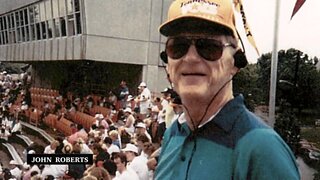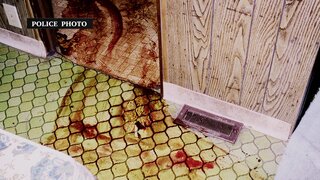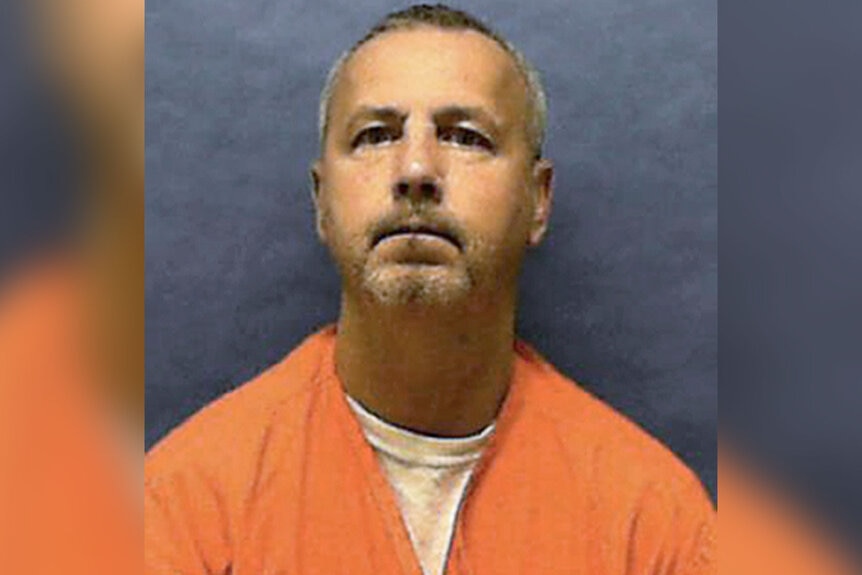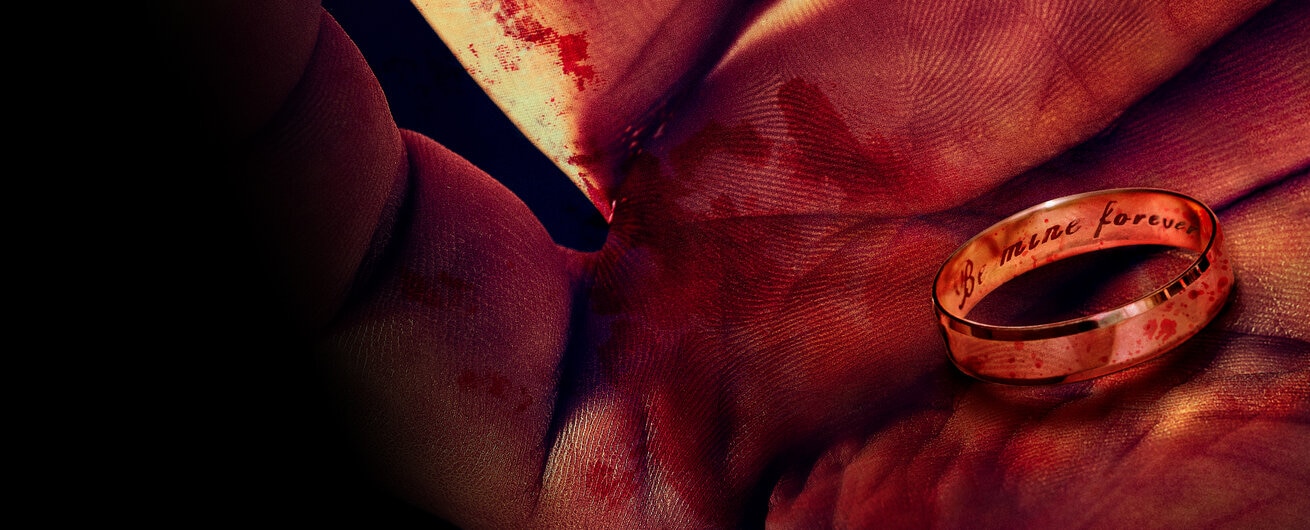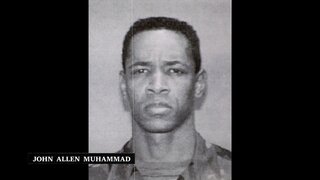Create a free profile to get unlimited access to exclusive videos, breaking news, sweepstakes, and more!
'I Didn't Want To Kill Nobody,' Serial Killer Says After Murdering 6 Men And Shoving Items In Their Mouths
The so-called "I-95 Killer" pursued gay men and placed items like leaves, socks, and sex toys in their mouths after their brutal murders.
In 1994, a serial killer was terrorizing gay communities along the East Coast of the United States. While police were able to identify their suspect relatively early on, it would take months to capture the vicious killer.
On the morning of May 5, 1994, a worker was checking the grounds of a golf club in Savannah, Georgia. She was looking around a maintenance shed when she came across a gruesome scene.
“She notices a kind of a lump on the ground and realizes she is looking at a body," Pat Lalama, a crime journalist, told Oxygen series "Mark of a Serial Killer."
Police arrived and determined there had been a violent struggle at the scene. The victim, an older man, showed visible signs of trauma to the body and his is pants pockets had been turned inside out, indicating a robbery. But one detail stood out.
"I saw in his mouth leaves and dirt were protruding. The thought that went through my head is, they didn’t get there by accident. There had to be a reason they were put there," Captain John Best with the Savannah Police Department told show producers.
The victim was identified as Milton Bradley, a 72-year-old World War II veteran. An autopsy showed Bradley had been strangled to death and brutally beaten — assaulted so badly that bones in his neck broke.
"There was a lot of rage that went into this murder," Best said. "There was an excessive amount of force used to kill the victim … it was overkill."
Investigators learned Bradley had last been seen leaving a bar with a man who had seemingly been flirting with him. That same man, a witness told them, returned back to the bar about 30 minutes to an hour later — without Bradley.
Days later, and just two hours from Savannah in Hilliard, Florida, the same killer appeared to have struck again.
A Hilliard couple realized their son hadn't shown up for work at a convenience store that they owned, so they went to check on him at his trailer. When they spotted blood on his door, they broke inside.
"There, lying on the floor, is their son, seemingly bludgeoned to death and his mouth is stuffed with a towel," Lalama told producers.
Investigators on the scene surmised there had been a violent struggle. The victim, a 37-year-old named Albert Morris, had been shot, beaten, and strangled. His pants pockets had been turned inside out. And, again, there was an item shoved down his throat.
But a valuable clue was recovered from the scene — a palm print on a TV entertainment center.
After talking to Morris' associates, they learned he frequented gay bars in Jacksonville and had recently brought home a man named Joey Pearson. He had agreed to let Pearson live with him temporarily in exchange for doing odd jobs around the house, but Pearson wasn't holding up his end of the bargain. The two got in a violent fight out one night at a bar about Pearson's refusal to help out at the home.
Police searched for the man, and it soon became clear "Joey Pearson" was an alias.
However, they did have a description of the suspect and after noticing the similarities between the two murders, so they began working with the Savannah Police Department. They circulated a sketch and soon found a witness who said he knew the man and had spent time with him recently — which included a visit to a convenience store. Investigators were able to recover video of that day and caught their suspect on tape.
That video footage was shown to Morris' friend, Jackie Strickland.
"There is Joey! That's him, that's what he looked like. He killed Al!" he remembered saying, Strickland told producers.
Both departments then joined up with the FBI as it became clear they were dealing with a serial killer — and one who was a drifter with multiple aliases. They determined he was targeting gay men at bars, taking money and using them before the murders. Authorities then sent out a bulletin to other departments to see if there had been other similar murders.
On March 15, 1994, a 59-year-old insurance salesman named John Roberts, who was openly gay, had been found murdered in Daytona Beach. A friend had called for a wellness check after they hadn't heard from him. His home was discovered ransacked. Roberts was dead, with a bloody rag in his mouth. He had been strangled and beaten.
Roberts, too, had recently met a man and brought him back to stay at his home. That man had quickly vanished.
Still, they had found crucial evidence at the residence — a probation paper belonging to a man named Gary Ray Bowles, who had a series of assaults and burglaries to his name. His booking photos looked just like the suspect in the Bradley and Morris murders, and investigators were able to compare his fingerprints in the database to the ones found at Bradley and Morris' crime scenes.
It was a match. They had their guy — but where would they find him?
Police brought Bowles' name and information forward in the media. He was placed on the FBI's Most Wanted List, and a national magazine put him on their cover. The nation was now on the hunt for this serial killer.
Investigators were soon contacted by other departments with similar cases. On April 14, David Alan Jarman, 39, had been found dead in Montgomery, Maryland. He had been beaten, strangled, and found with a sex toy in his mouth. His car and credit cards had been stolen.
On May 13, Alverson Carter, 47, had been found dead in Atlanta. He had been stabbed to death with a towel shoved down his throat.
"Gary Bowles was identified as the I-95 Killer," Bernie de la Rionda, Florida assistant state attorney, told producers.
"Most of the murders occurred by the interstate."
However, Bowles seemed to have disappeared. The killings stopped for months, and media attention waned — until he eventually struck again.
On November 20, a 47-year-old man named Jay Hinton failed to show up for work at a flower shop in Jacksonville, Florida. His sister went to check on him and found him murdered. A massive cinder block had been dropped on him, he had been strangled, and toilet paper and a rag were shoved in his throat. But at this point, police there didn't make the connection to Bowles, as the 1-95 Killer had been out of the spotlight for some time.
Investigators did, however, locate a paystub belonging to a day laborer named Timothy Whitfield. They made calls indicating to keep an eye out for Whitfield, and he eventually showed up at the employment office. He was arrested and taken in for questioning. He denied the murder at first, but couldn't maintain his innocence for long.
"He said, Do you know who I really am? I’m a wanted man!'" de la Rionda said.
Bowles eventually confessed to all six murders. When asked later why he confessed, he said, "So the killing would stop," as heard in audio obtained by "Mark of a Serial Killer."
"I didn’t want to kill nobody. But I did. I don’t know why," he admitted.
Bowles was found guilty of murder and sentenced to death. He was executed by the state via lethal injection on August 22, 2019.
“Having to deal with your son being a monster is terrible,” Bowles wrote to his mother in a two-page statement given to media after his execution, Jacksonville.com reported at the time. “I’m so very sorry.”
For more on this case and others like it, watch "Mark of a Serial Killer" on Oxygen or stream episodes here.
